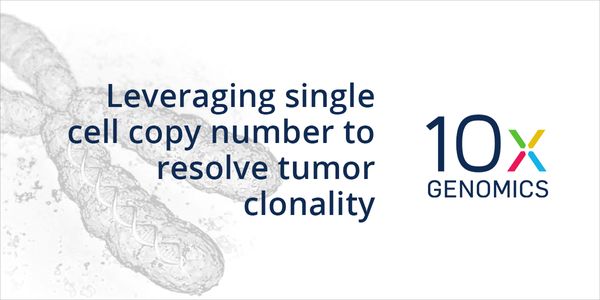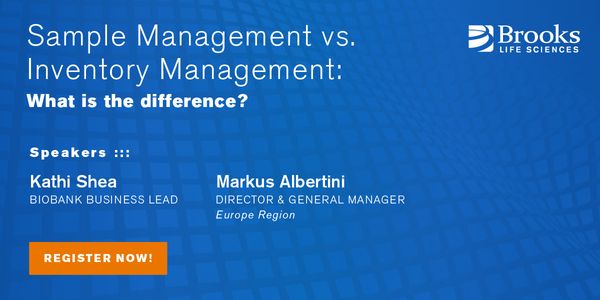Dna structure
Deoxyribonucleic acid (DNA) is made up of two strands winding around each other to generate a "double helix". The backbone of each individual strand consists of sugar and phosphate groups. Each sugar is attached to a base: adenine (A), cytosine (C), guanine (G), or thymine (T).
-
APR 02, 2020 | 8:00 AMDATE: April 2, 2020 TIME: 8:00am PT, 11:00am ET Cyclins A2 and E1 regulate the cell cycle by promoting S phase entry and progression. We recently identified a hepatocellular carcinoma (HCC)...JAN 29, 2020 | 9:00 AMDATE: January 29, 2019 TIME: 9:00am PST Plasma membrane proteins are a difficult subset of proteins to solubilize, purify, quantify, and detect, largely due to the challenge of extracting th...NOV 12, 2019 | 10:00 AMDATE: November 12, 2019TIME: 10:00am PSTDirect measurement of copy number by droplet-based shallow sequencing of genomic DNA has the potential to provide new insights into tumor heterog...OCT 10, 2019 | 10:30 AMAccumulation of structural variations (SVs) across the genome is a known trigger factor for oncogenesis. Structural mutations have been clearly implicated in a number of cancers, most notably...Speaker: Sven Bocklandt, PhDOCT 01, 2019 | 8:00 AMDATE: October 1, 2019TIME: 8:00am PTIn the webinar, Introduction to Characterization of Biomolecules Using Analytical Ultracentrifugation, we discussed the fundamentals of analytical...SEP 05, 2019 | 7:00 AMDATE: September 5, 2019TIME: 7:00am PT, 10:00am ET, 4:00pm CEST PCR (Polymerase Chain Reaction) has gone through a massive evolution since its development in 1983. Besides it...JUN 26, 2019 | 9:00 AMDATE: June 26, 2019TIME: 9:00am PDT, 12:00pm EDT An excessive number of software solutions are available to help manage your clinical, biobank, or biorepository sample inform...JUN 18, 2019 | 9:00 AMDATE: June 18, 2019TIME: 9:00am PDT, 12:00pm EDT, 5:00pm BST In the Atacama desert, Chile, twelve small aperture telescopes are observing the southern sky since 2016. Combining the opti...JUN 18, 2019 | 8:00 AMDATE: June 18, 2019TIME: 08:00am PDTAnalytical Ultracentrifugation (AUC) is one of the most powerful biophysical tools used today for the characterization of biological samples ranging...MAY 09, 2019 | 9:00 AMRelease of the first human genome assembly was a landmark achievement, and after nearly two decades of improvements, the current human reference genome (GRCh38) is the most accurate and compl...MAY 09, 2019 | 7:30 AMC.E. CREDITSRecent technological advances as well as longitudinal monitoring not only have the potential to improve the treatment of disease (Precision Medicine) but also empower people to stay healthy (...MAY 08, 2019 | 1:30 PMRecent improvements in sequencing chemistry and instrument performance combine to create a new PacBio data type of highly accurate (HiFi), long insert reads. Increased read length and improve...Speaker: Jonas Korlach, PhDMAY 08, 2019 | 10:30 AMC.E. CREDITSOne of the central tenants of biology is that our genetics—our genotype—influences the physical characteristics we manifest—our phenotype. But with more than 25,000 human ge...FEB 27, 2019 | 10:30 AMAn aptamer (also known as a synthetic antibody) is a stable DNA, RNA, or peptide ligand that binds with high affinity and specificity to targets such as small molecules, peptides, proteins, b...FEB 26, 2019 | 9:00 AMDATE: February 26, 2019TIME: 9:00am PST, 12:00pm EST In an era of increasingly high-throughput, large-scale biology, with companies, government and non-prof...Speaker: Andrew Brooks, Ph.D. , Shawn Levy, Ph.D. , Brad Hamilton , Fay Betsou, Ph.DSponsored By: Brooks Life SciencesOCT 11, 2018 | 1:30 PMAs the most common female malignancy, breast cancer is the most likely reason that a woman will die of cancer around the world. Breast cancer mortality has dropped in the U.S. by 35% since 19...Speaker: Benjamin Anderson, MDOCT 11, 2018 | 12:00 PMLung cancer is the leading cause of cancer-related mortality worldwide. Large-scale sequencing studies have revealed the complex genomic landscape of NSCLC and genomic differences between lun...Speaker: Nicholas McGranahan, PhDOCT 11, 2018 | 10:30 AMTwo projects looking at novel approaches to targeting inflammatory breast cancer will be presented. Inflammatory breast cancer (IBC) is a unique, understudied, and most lethal subtype account...Speaker: Kevin Williams, PhDOCT 11, 2018 | 9:00 AMThe oncogenic transcription factor c-MYC (MYC) is deregulated, and often overexpressed, in more than 50% of cancers. MYC deregulation is associated with poor prognosis and aggressive disease,...Speaker: Jason De Melo, PhDOCT 11, 2018 | 7:30 AMIn the past two decades a small number of infrequently dividing cells have been proposed as the source of multi-drug resistance during cancer treatment. These cells identified by their expres...Speaker: Krastan Blagoev, PhDOCT 11, 2018 | 6:00 AMPacBio Sequencing simultaneously provides long sequence reads, high consensus accuracy, minimal sequence bias, and methylation detection. I will highlight new advances and updates on applying...Speaker: Jonas Korlach, PhDOCT 10, 2018 | 12:00 PMTo date the anatomic extent of tumor (TNM-classification) has been by far the most important factors to predict the prognosis of cancer patients. However, this classification provides limited...Speaker: Jerome Galon, PhDOCT 10, 2018 | 12:00 PMRNA sequencing unlocks the mysteries hidden in the transcriptome. Whether your goal is gene expression analysis, gene fusion analysis, SNP analysis or miRNA expression analysis, achieving hig...Speaker: Jonathan Shaffer, PhD, MBAOCT 10, 2018 | 9:00 AMHigh-throughput screening is widely useful in identifying genes and pathways that drive changes in cell behavior such as cell cycle regulation, metastasis, and drug resistance. Millipor...Speaker: Andrew Ravanelli, PhD
APR 02, 2020 | 8:00 AM
DATE: April 2, 2020 TIME: 8:00am PT, 11:00am ET Cyclins A2 and E1 regulate the cell cycle by promoting S phase entry and progression. We recently identified a hepatocellular carcinoma (HCC)...
JAN 29, 2020 | 9:00 AM
DATE: January 29, 2019 TIME: 9:00am PST Plasma membrane proteins are a difficult subset of proteins to solubilize, purify, quantify, and detect, largely due to the challenge of extracting th...
NOV 12, 2019 | 10:00 AM
DATE: November 12, 2019TIME: 10:00am PSTDirect measurement of copy number by droplet-based shallow sequencing of genomic DNA has the potential to provide new insights into tumor heterog...
OCT 10, 2019 | 10:30 AM
Accumulation of structural variations (SVs) across the genome is a known trigger factor for oncogenesis. Structural mutations have been clearly implicated in a number of cancers, most notably...
Speaker:
Sven Bocklandt, PhD
OCT 01, 2019 | 8:00 AM
DATE: October 1, 2019TIME: 8:00am PTIn the webinar, Introduction to Characterization of Biomolecules Using Analytical Ultracentrifugation, we discussed the fundamentals of analytical...
SEP 05, 2019 | 7:00 AM
DATE: September 5, 2019TIME: 7:00am PT, 10:00am ET, 4:00pm CEST PCR (Polymerase Chain Reaction) has gone through a massive evolution since its development in 1983. Besides it...
JUN 26, 2019 | 9:00 AM
DATE: June 26, 2019TIME: 9:00am PDT, 12:00pm EDT An excessive number of software solutions are available to help manage your clinical, biobank, or biorepository sample inform...
JUN 18, 2019 | 9:00 AM
DATE: June 18, 2019TIME: 9:00am PDT, 12:00pm EDT, 5:00pm BST In the Atacama desert, Chile, twelve small aperture telescopes are observing the southern sky since 2016. Combining the opti...
JUN 18, 2019 | 8:00 AM
DATE: June 18, 2019TIME: 08:00am PDTAnalytical Ultracentrifugation (AUC) is one of the most powerful biophysical tools used today for the characterization of biological samples ranging...
MAY 09, 2019 | 9:00 AM
Release of the first human genome assembly was a landmark achievement, and after nearly two decades of improvements, the current human reference genome (GRCh38) is the most accurate and compl...
MAY 09, 2019 | 7:30 AM
C.E. CREDITS
Recent technological advances as well as longitudinal monitoring not only have the potential to improve the treatment of disease (Precision Medicine) but also empower people to stay healthy (...
MAY 08, 2019 | 1:30 PM
Recent improvements in sequencing chemistry and instrument performance combine to create a new PacBio data type of highly accurate (HiFi), long insert reads. Increased read length and improve...
Speaker:
Jonas Korlach, PhD
MAY 08, 2019 | 10:30 AM
C.E. CREDITS
One of the central tenants of biology is that our genetics—our genotype—influences the physical characteristics we manifest—our phenotype. But with more than 25,000 human ge...
FEB 27, 2019 | 10:30 AM
An aptamer (also known as a synthetic antibody) is a stable DNA, RNA, or peptide ligand that binds with high affinity and specificity to targets such as small molecules, peptides, proteins, b...
FEB 26, 2019 | 9:00 AM
DATE: February 26, 2019TIME: 9:00am PST, 12:00pm EST In an era of increasingly high-throughput, large-scale biology, with companies, government and non-prof...
Speaker:
Andrew Brooks, Ph.D.
, Shawn Levy, Ph.D.
, Brad Hamilton
, Fay Betsou, Ph.D
Sponsored By: Brooks Life Sciences
OCT 11, 2018 | 1:30 PM
As the most common female malignancy, breast cancer is the most likely reason that a woman will die of cancer around the world. Breast cancer mortality has dropped in the U.S. by 35% since 19...
Speaker:
Benjamin Anderson, MD
OCT 11, 2018 | 12:00 PM
Lung cancer is the leading cause of cancer-related mortality worldwide. Large-scale sequencing studies have revealed the complex genomic landscape of NSCLC and genomic differences between lun...
Speaker:
Nicholas McGranahan, PhD
OCT 11, 2018 | 10:30 AM
Two projects looking at novel approaches to targeting inflammatory breast cancer will be presented. Inflammatory breast cancer (IBC) is a unique, understudied, and most lethal subtype account...
Speaker:
Kevin Williams, PhD
OCT 11, 2018 | 9:00 AM
The oncogenic transcription factor c-MYC (MYC) is deregulated, and often overexpressed, in more than 50% of cancers. MYC deregulation is associated with poor prognosis and aggressive disease,...
Speaker:
Jason De Melo, PhD
OCT 11, 2018 | 7:30 AM
In the past two decades a small number of infrequently dividing cells have been proposed as the source of multi-drug resistance during cancer treatment. These cells identified by their expres...
Speaker:
Krastan Blagoev, PhD
OCT 11, 2018 | 6:00 AM
PacBio Sequencing simultaneously provides long sequence reads, high consensus accuracy, minimal sequence bias, and methylation detection. I will highlight new advances and updates on applying...
Speaker:
Jonas Korlach, PhD
OCT 10, 2018 | 12:00 PM
To date the anatomic extent of tumor (TNM-classification) has been by far the most important factors to predict the prognosis of cancer patients. However, this classification provides limited...
Speaker:
Jerome Galon, PhD
OCT 10, 2018 | 12:00 PM
RNA sequencing unlocks the mysteries hidden in the transcriptome. Whether your goal is gene expression analysis, gene fusion analysis, SNP analysis or miRNA expression analysis, achieving hig...
Speaker:
Jonathan Shaffer, PhD, MBA
OCT 10, 2018 | 9:00 AM
High-throughput screening is widely useful in identifying genes and pathways that drive changes in cell behavior such as cell cycle regulation, metastasis, and drug resistance. Millipor...
Speaker:
Andrew Ravanelli, PhD
























